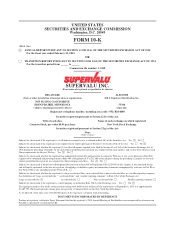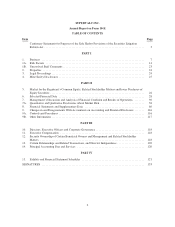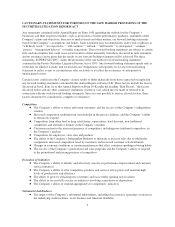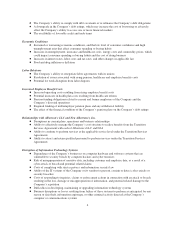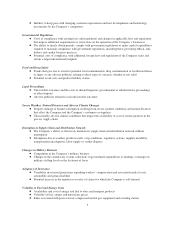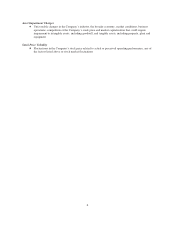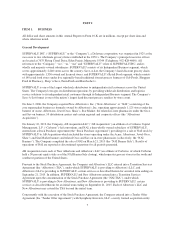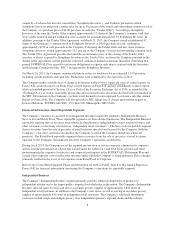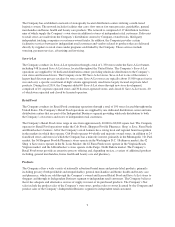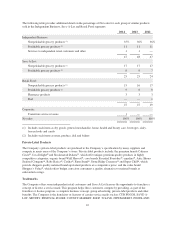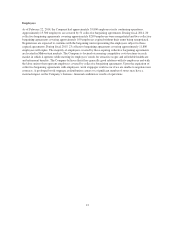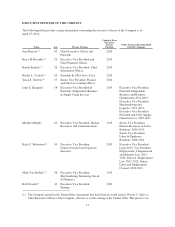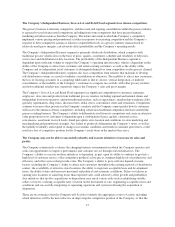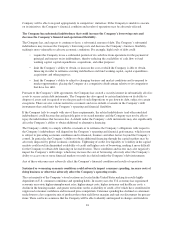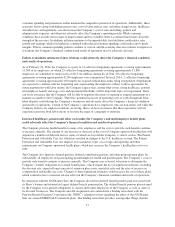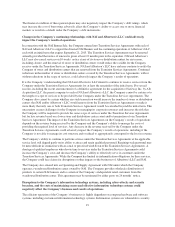Albertsons 2014 Annual Report Download - page 13
Download and view the complete annual report
Please find page 13 of the 2014 Albertsons annual report below. You can navigate through the pages in the report by either clicking on the pages listed below, or by using the keyword search tool below to find specific information within the annual report.JUBILEE and SUPERVALU. In conjunction with its licensing and franchise arrangements, the Company
maintains wholesale distribution agreements with its licensees and franchisees, primarily under the Save-A-Lot
and Cub Foods banners.
In connection with the June 2006 Albertsons Acquisition, the Company entered into a trademark license
agreement with Albertson’s LLC, the purchaser of the non-core supermarket business of Albertsons, under which
Albertson’s LLC was allowed to use legacy Albertsons trademarks related to the NAI Banners that the Company
sold in March 2013, such as ALBERTSONS, JEWEL-OSCO, SHAW’S, ACME MARKETS, SAV-ON and
LUCKY. Pursuant to the Stock Purchase Agreement, the Company entered into certain cross-licensing
arrangements and assignments for certain tradenames and trademarks associated with the NAI Banner Sale,
which permits each of the Company, Albertson’s LLC and NAI and their affiliates to use tradenames and
trademarks that are owned by the respective parties as is necessary for the operation of their respective
businesses. These tradenames and trademarks include private-label products.
The Company registers a substantial number of its trademarks/service marks in the United States Patent and
Trademark Office, including many of its private-label product trademarks and service marks. U.S. trademark and
service mark registrations are generally for a term of 10 years, renewable every 10 years as long as the trademark
is used in the regular course of trade. The Company considers certain of its trademarks and service marks to be of
material importance to its Independent Business, Save-A-Lot and Retail Food segments and actively defends and
enforces such trademarks and service marks.
Working Capital
Normal operating fluctuations in working capital balances can result in changes to cash flow from operations
presented in the Consolidated Statements of Cash Flows that are not necessarily indicative of long-term operating
trends. The Company’s working capital needs are generally greater during the months leading up to high sales
periods, such as the time period from prior to Thanksgiving through December. The Company typically finances
these working capital needs with funds provided by operating activities and short-term borrowings. Inventories
are managed primarily through demand forecasting and replenishing depleted inventories. There are no unusual
industry practices or requirements relating to working capital items.
Competition
The Company’s Independent Business, Save-A-Lot and Retail Food segments operate in a highly competitive
environment. The Company believes that the success of its Independent Business, Save-A-Lot and Retail Food
segments are dependent upon the ability of its own stores and stores licensed by the Company, as well as the
stores of independent retail customers it supplies, to compete successfully with other retail food stores. Recent
and ongoing consolidation within the grocery industry is expected to result in increased competition including
from some competitors that have greater financial, marketing and other resources than the Company.
The traditional wholesale distribution component of the Company’s Independent Business segment competes
directly with a number of traditional grocery wholesalers. The Company believes it competes in this business on
the basis of price, quality, assortment, schedule and reliability of deliveries, service fees and distribution facility
locations.
Principal competition for the Company’s Save-A-lot and Retail Food segments comes from traditional grocery
retailers, including regional and national chains and independent food store operators, and non-traditional
retailers, such as supercenters, membership warehouse clubs, specialty supermarkets, drug stores, discount stores,
dollar stores, convenience stores and restaurants. The Company believes that the principal competitive factors
faced by its own stores and stores licensed by the Company, as well as the stores of independent retail customers
it supplies, include price, quality, customer service, convenience, assortment, in-stock levels, brand recognition,
store location and conditions, in-store marketing and merchandising, promotional strategies and other
competitive activities.
11


